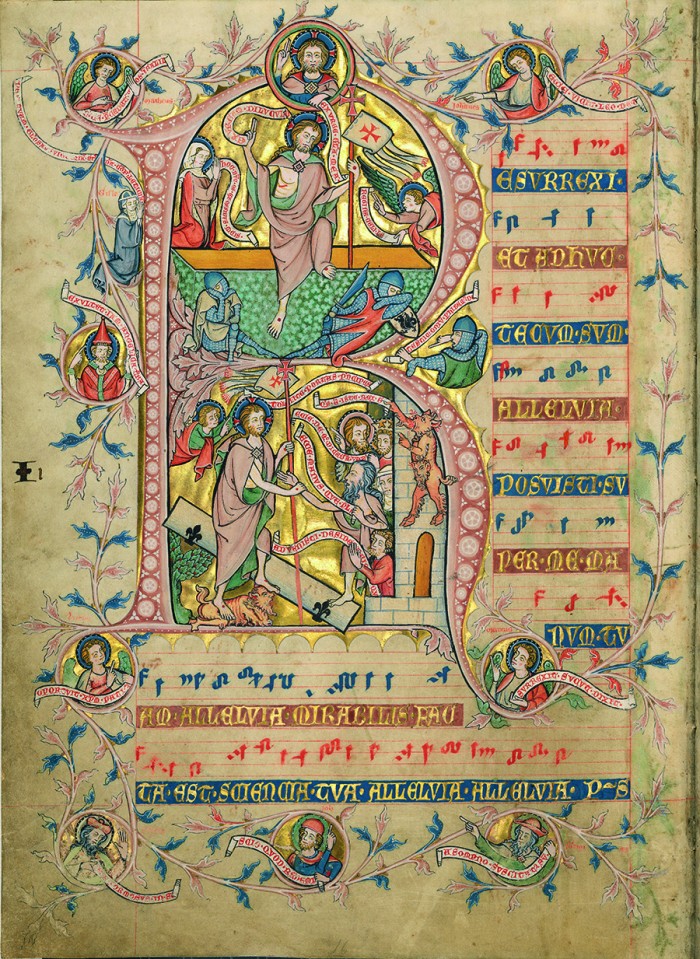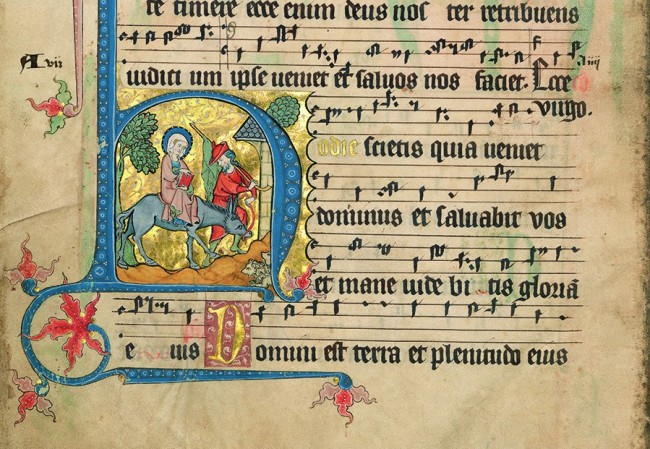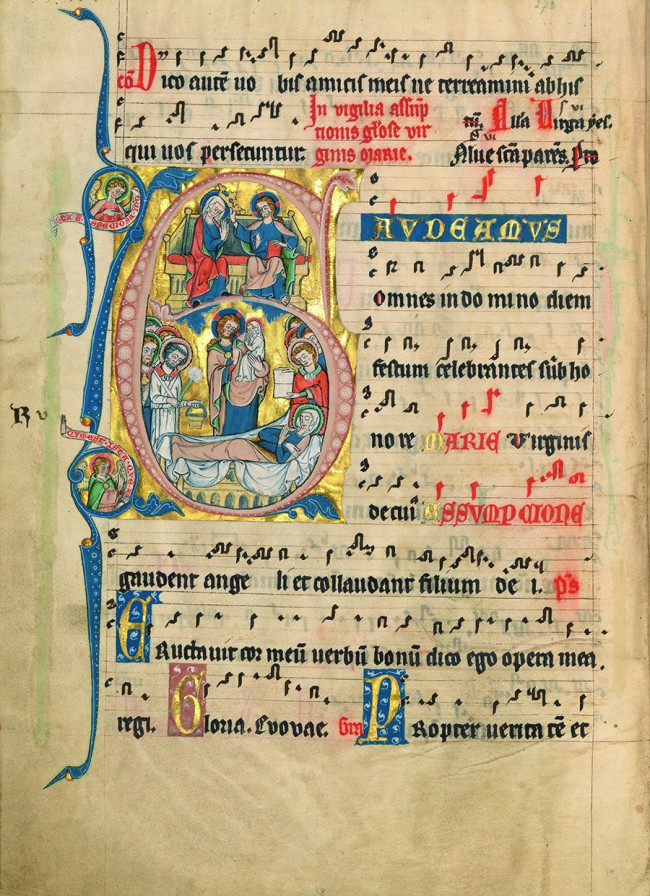The Codex Gisle is finally available! To celebrate this amazing facsimile, we’re happy to publish an article by Judith Oliver, author of “Singing with Angels”, a book entirely devoted to the beautiful gradual illuminated by Gisela von Kerssenbrock. Thanks, Judy!
The Cistercian Convent of Marienbrunn in Rulle and Its Choirbook
The splendid manuscript from a small Cistercian nunnery outside the town of Osnabrück in northern Germany known as the Codex Gisle is one of the most richly illuminated choirbooks made in northern Europe in the high Gothic period.
It is a gradual containing the chants for the mass and its 52 historiated initials for major chants are embellished with numerous literary quotations from the liturgy reflecting the intellectual ambience of the encloistered nuns who made and used it.
Preserved at Rulle for centuries, it came into the keeping of the bishopric of Osnabrück after the French Revolution, first at the Gymnasium Carolinum, and now at the Diözesanarchiv where it is Inv. No. Ma 101.

Gisela von Kerssenbrock as Scribe and Artist
The artist and scribe are clearly identified in an extraordinarily detailed prefatory memorial verse identifying “the venerable and pious virgin Gisela von Kerssenbroeck” as the person who “wrote, illuminated, notated, paginated, and decorated this admirable book with golden letters and beautiful images in her memory” before her death in 1300.
While professional workshops were well established in the Gothic period, the one type of book that remained a near monopoly of monastic craftsmen were music books, because of their complex chant repertoire.
Gisela von Kerssenbrock as Choirmistress
Gisela is depicted twice in her manuscript identified in the humble diminutive as “Gisle.”
She leads her sisters in song at Christmas and kneels in prayer as a witness or visionary at the Resurrection on Easter. Her gesture pointing to the words of the Christmas sequence chant suggests that she was the choirmistress.
As such, she would have memorized the chant repertoire, and was in charge of the convent’s liturgical books and in-house book production.
An Elegant and Charming Style
The high quality of Gisela’s miniatures identify her as one of the the most gifted women artists of the Middle Ages.
Her images possess an elegant courtly gothic style with deep reds and blues set against shimmering gold grounds. The sounds made by various participants in the initials get particular attention.
At the Kyrie and Confitemini chants of Holy Saturday a choir of angels is singing, some of them with realistically open mouths. On the road to Bethlehem, the donkey lowers its head and opens its mouth to bray, both from fatique and more symbolically from carrying the weight of salvation on its back.

Two lions roar menacingly in the foreground as the holy family traverses the wilderness before reaching the safety of Bethlehem’s gate.
Choirbooks for use at Mass and the Codex Gisle’s Unusual Cycle
Most surviving German graduals from the period around 1300 were made for women’s houses, but they differ dramatically from the Codex Gisle in their liturgical emphasis.
While these other choirbooks have dozens of images for the feasts of saints, Gisle’s book instead is unique in its focus on the Easter season which was of fundamental importance in monastic life.
Of its 52 initials, 11 occur in Lent and Holy Week and 22 in the Easter Season. On Easter day, every single one of its 8 chants receives an historiated initial! The Advent and Christmas season are also singled out for heightened celebration with 8 initials.

Art as Music and Music as Art
Phrases of chants appear on banderoles turning the narrative scenes in many initials into mini-operas with many voices engaged in melodious conversation.
At the same time, individual phrases of music and words of chant are embellished in red, blue and gold turning them into painted embroidery on the parchment page. For example, at the feast of the Assumption, the words Marie and assumptione are written in red with red notes highlighting a rising melody just as Mary is raised to heaven in the initial.
Both phenomena – the nearly operatic multiplicity of chant quotations and the visual highlighting of music and words of text are unique or highly unusual features of Gisela’s choirbook. They reflect the fusion of music and art in the religious services of women’s convents described in the writings of contemporary German visionary nuns.
The fusion of the senses known as synaesthesia seen in Gisela’s manuscript reflects a highly desired heightened state of mind in monastic choir devotions.
Bibliography
- Judith Oliver, Singing with Angels. Liturgy, Music, and Art in the Gradual of Gisela von Kerssenbrock (Turnhout: Brepols, 2007).
- Judith Oliver, “Sounds and Visions of Heaven: The Fusion of Music and Art in the Gradual of Gisela von Kerssenbrock,” in Susan Boynton and Diane Reilly eds., Resounding Images: Medieval Intersections of Art, Music, and Sound (Turnhout: Brepols, 2015 in press).

